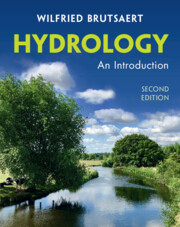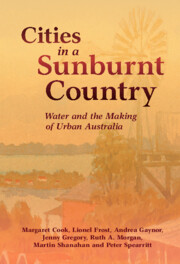95 results
19 - Recent Weather Extremes
- from Part V - Our Changing Climate
-
- Book:
- The Science of Our Changing Climate
- Published online:
- 05 April 2024
- Print publication:
- 02 May 2024, pp 334-354
-
- Chapter
- Export citation
4 - Rivers and Memory
-
- Book:
- Medieval Riverscapes
- Published online:
- 15 March 2024
- Print publication:
- 28 March 2024, pp 140-172
-
- Chapter
- Export citation
Chapter 9 - Primary and Secondary Stressors
- from Section 1 - The Nature and Impacts of Twenty-First-Century Healthcare Emergencies
-
-
- Book:
- Major Incidents, Pandemics and Mental Health
- Published online:
- 11 January 2024
- Print publication:
- 01 February 2024, pp 42-48
-
- Chapter
- Export citation
Public Health and Health System’s Responsiveness During the 2022 Floods in Pakistan: What Needs to Be Done?
-
- Journal:
- Disaster Medicine and Public Health Preparedness / Volume 17 / 2023
- Published online by Cambridge University Press:
- 02 January 2024, e567
-
- Article
-
- You have access
- Open access
- HTML
- Export citation
Health System Response to the 2023 Floods in Emilia-Romagna, Italy: A Field Report
-
- Journal:
- Prehospital and Disaster Medicine / Volume 38 / Issue 6 / December 2023
- Published online by Cambridge University Press:
- 27 September 2023, pp. 813-817
- Print publication:
- December 2023
-
- Article
-
- You have access
- Open access
- HTML
- Export citation
33 - Uncertain Futures
-
-
- Book:
- The Cambridge History of the Australian Novel
- Published online:
- 28 June 2023
- Print publication:
- 27 July 2023, pp 557-574
-
- Chapter
- Export citation
Successful Large Hospital Evacuation With 11 350 Patients Transferred in the 2021 Zhengzhou Flood
-
- Journal:
- Disaster Medicine and Public Health Preparedness / Volume 17 / 2023
- Published online by Cambridge University Press:
- 24 July 2023, e434
-
- Article
-
- You have access
- Open access
- HTML
- Export citation
Impacts of Hurricane Matthew Exposure on Infections and Antimicrobial Prescribing in North Carolina Veterans
-
- Journal:
- Disaster Medicine and Public Health Preparedness / Volume 17 / 2023
- Published online by Cambridge University Press:
- 20 March 2023, e357
-
- Article
-
- You have access
- Open access
- HTML
- Export citation
Diagnosis Codes for Mold Infections and Mold Exposure Before and After Hurricane Harvey Among a Commercially Insured Population—Houston, Texas, 2016–2018
-
- Journal:
- Disaster Medicine and Public Health Preparedness / Volume 17 / 2023
- Published online by Cambridge University Press:
- 17 March 2023, e504
-
- Article
- Export citation

Hydrology
- An Introduction
-
- Published online:
- 01 March 2023
- Print publication:
- 23 February 2023
-
- Textbook
- Export citation
Rising cases of Dengue and Malaria in Flood Affected Areas of Pakistan: A Major Threat to the Country’s Healthcare System
-
- Journal:
- Disaster Medicine and Public Health Preparedness / Volume 17 / 2023
- Published online by Cambridge University Press:
- 15 February 2023, e323
-
- Article
-
- You have access
- HTML
- Export citation
‘Droughts and Flooding Rains’: Ecology and Australian Theatre in the 1950s
-
- Journal:
- New Theatre Quarterly / Volume 38 / Issue 4 / November 2022
- Published online by Cambridge University Press:
- 18 October 2022, pp. 319-332
- Print publication:
- November 2022
-
- Article
-
- You have access
- Open access
- Export citation
Cross-Sectional Study on Risk of Flooding and Landslides and Their Associated Perceptions Among Home Health-Care Patients Living in Fukui Prefecture, Japan
- Part of
-
- Journal:
- Disaster Medicine and Public Health Preparedness / Volume 17 / 2023
- Published online by Cambridge University Press:
- 13 October 2022, e264
-
- Article
- Export citation
22 - Insuring Natural Catastrophes in America
- from Part IV - Private Sector Initiatives to Promote Disaster Resilience and Recovery
-
-
- Book:
- The Cambridge Handbook of Disaster Law and Policy
- Published online:
- 27 October 2022
- Print publication:
- 29 September 2022, pp 366-377
-
- Chapter
- Export citation
7 - Climate Resilience in the Greater Bay Area of South China
- from Part II - Effective Governance as an Imperative for Responsive Disaster Law and Policy
-
-
- Book:
- The Cambridge Handbook of Disaster Law and Policy
- Published online:
- 27 October 2022
- Print publication:
- 29 September 2022, pp 107-130
-
- Chapter
- Export citation
8 - Twenty-First Century Australian Cities
-
- Book:
- Cities in a Sunburnt Country
- Published online:
- 19 May 2022
- Print publication:
- 19 May 2022, pp 198-230
-
- Chapter
- Export citation
7 - Natural Disasters
- from Part II - Pandemics and Other Disasters
-
- Book:
- Fragile Futures
- Published online:
- 28 April 2022
- Print publication:
- 19 May 2022, pp 77-89
-
- Chapter
- Export citation

Cities in a Sunburnt Country
- Water and the Making of Urban Australia
-
- Published online:
- 19 May 2022
- Print publication:
- 19 May 2022
7 - Crises of Confidence
-
- Book:
- Cities in a Sunburnt Country
- Published online:
- 19 May 2022
- Print publication:
- 19 May 2022, pp 163-197
-
- Chapter
- Export citation
Central Andean (28–34°S) flood record 0–25 ka from Salinas del Bebedero, Argentina
-
- Journal:
- Quaternary Research / Volume 109 / September 2022
- Published online by Cambridge University Press:
- 20 April 2022, pp. 102-127
-
- Article
- Export citation



